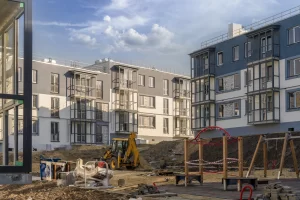Purchasing a home is a major life milestone, and planning for a mortgage is a crucial step to making that dream come true. Whether you’re a first-time homebuyer or looking to upgrade your existing property, careful preparation and understanding of the mortgage process are essential. In this article, we will guide you through the essential steps for effective mortgage planning. From understanding your credit score to getting pre-approved, we’ve got you covered!
- Understanding Your Credit Score
- Determining Your Budget
- Securing Your Down Payment
- Your Mortgage Options
- Collecting Your Documents
- Getting Pre-Approved
- Start House Hunting!
1. Understanding Your Credit Score
Your credit score is crucial in determining your mortgage eligibility and the interest rate you’ll be offered. Most lenders; including banks, credit unions, and other financial institutions will be looking for a credit score of at least 680, especially if your down payment is less than 20%. Although, a higher credit score can result in lower interest rates and better terms, potentially saving you thousands of dollars over the life of the mortgage.
Start by obtaining a copy of your credit report through one of Canada’s two credit reporting agencies, Equifax or TransUnion. Review it carefully, checking for any errors or discrepancies, and take steps to rectify them if necessary.
What if I don’t meet the minimum credit score requirement?
Even, if you don’t meet the minimum credit score requirement, there are still options available to you! Firstly, consider taking steps to improve your credit score by making timely bill payments, reducing debt, and resolving any outstanding issues on your credit report.
You can also try exploring alternative mortgage lenders or loan programs that cater to individuals with lower credit scores. These lenders may have different criteria and may be willing to work with borrowers who have less-than-perfect credit. Either way, it’s best to consult with a licensed mortgage professional who can provide guidance on suitable options for your specific situation.
2. Determining Your Budget
Once you have a clear understanding of your credit score, it’s time to establish a realistic budget for your mortgage. This involves assessing your monthly income, existing expenses, and potential future changes that could affect your financial situation, such as career advancements or family planning.
Start by taking a comprehensive look at your current financial obligations and determine how much you can comfortably afford for mortgage payments. It’s important to consider not only the principal and interest but also the additional costs associated with homeownership, such as property taxes, insurance, and maintenance. These expenses can significantly impact your overall budget.
To assist you in this process, online mortgage calculators, such as our mortgage payment calculator, can be invaluable tools. They allow you to estimate monthly payments based on different interest rates and loan terms, enabling you to assess various scenarios and make informed decisions.
Remember that while searching for a mortgage that fits within your budget, it’s important to strike a balance between affordability and financial stability. Leave room for unexpected expenses and ensure that your mortgage payments align with your long-term financial goals. Consulting with a licensed mortgage professional can provide further guidance in determining a realistic mortgage budget based on your specific circumstances.
3. Securing Your Down Payment
Saving for a down payment is an essential step in the mortgage planning process. The down payment is a percentage of the home’s purchase price that you pay upfront, reducing the amount you need to borrow. It’s recommended to aim for at least a 20% down payment to avoid the additional cost of mortgage default insurance. Unfortunately, we understand this isn’t possible for everyone.
Although the minimum requirement is typically 5% of the home’s purchase price, a higher down payment offers benefits such as lower monthly payments and access to better rates and terms. It is important to note, however, that any borrower with less than a 20% down payment will be required to purchase mortgage default insurance.
Down Payment Sources
- Personal Savings
- One of the most common approaches is saving up from your personal funds, and setting aside a portion of your income in a dedicated savings account. This method allows for greater control and flexibility over your down payment funds.
- Gifted Down Payments
- You can receive a financial gift from an immediate family member, such as parents or grandparents, to use as a down payment. This gift must be documented with a gift letter stating that it does not need to be repaid.
- RRSP Home Buyer’s Plan
- The Home Buyers’ Plan allows first-time homebuyers to withdraw up to $60,000 from their Registered Retirement Savings Plan (RRSP) tax-free to use as a down payment. However, the withdrawn amount must be repaid to your RRSP over a period of 15 years.
- Assistance Programs/Grants
- Additionally, you can explore government programs and incentives specifically designed to assist homebuyers, such as down payment assistance programs or grants. Many regions have their own homeownership programs that can help you with the cost.
Note: It is recommended to consult with a licensed mortgage professional to ensure that your down payment meets eligibility requirements.
4. Your Mortgage Options
Familiarize yourself with the two primary types: fixed-rate and variable-rate mortgages. Fixed-rate mortgages offer stability and predictability, as the interest rate remains constant throughout the mortgage term. This allows you to plan your budget effectively without worrying about interest rate fluctuations. On the other hand, variable-rate mortgages are influenced by market conditions and can fluctuate over time. While this introduces some uncertainty, it may lead to savings if interest rates decrease.
In addition to the choice between fixed and variable rates, it’s also essential to consider the difference between open and closed mortgages. An open mortgage allows you the flexibility to make prepayments or pay off the mortgage in part or in full at any time without penalties. This option is ideal if you anticipate changes in your financial situation or plan to sell the property in the near future.
Conversely, a closed mortgage comes with a fixed term and limited prepayment options. While they often have lower interest rates, they have restrictions on prepayment and may incur penalties if paid off before the term ends. Closed mortgages are suitable for those seeking stability without the need for significant changes during the term.
With access to over 143 lenders, our agents here at Mortgage Suite are able to provide you with a wider range of mortgage solutions tailored to fit your specific situation. With their assistance, you can confidently choose a mortgage that aligns with your needs and ensures a sound financial future.
5. Collecting Your Documents
Mortgage applications require extensive paperwork, so getting organized ahead of time is crucial! You will typically be asked for the following:
- Government-Issued Photo ID (i.e., Driver’s License or Passport)
- Letter of Employment
- Paystubs (most recent 30 days)
- T1 General & Financial Statements (if self-employed)
- 3 Months’ Bank Statements
- Proof of your down payment source
6. Getting Pre-Approved
Obtaining a mortgage pre-approval is highly recommended before you start house shopping. A pre-approval involves submitting your financial information to a lender who will evaluate your financial information and provide a conditional commitment for a mortgage amount. Getting pre-approved for a mortgage offers several benefits that can streamline your home-buying process. By understanding the benefits of pre-approval and avoiding certain pitfalls, you can increase your chances of securing your desired mortgage and successfully navigating the homebuying journey.
- Provides a clear understanding of your budget and price range
- Demonstrates seriousness to sellers in competitive markets
- Locks in your rate from 90-120 days, protecting it from interest rate increases
To ensure you stay pre-approved, here are a few things to avoid.
- Refrain from making major purchases or applying for new credit
- Avoid changing or quitting your job or becoming self-employed
- Be cautious not to miss any bill payments or make late payments
- Be prepared to explain and show proof of any large or unusual deposits
7. Start House Hunting
Now that you have your budget, pre-approval, and mortgage options in hand, it’s time to find your dream home! Start by hiring a trusted real estate agent who knows your needs and the local market. Visit open houses, explore neighborhoods, and start assessing properties within your budget. While evaluating properties, be sure to conduct thorough inspections, consider their future appreciation potential, and factor in any renovation or repair costs.
As you approach the closing stage, keep these mortgage closing tips in mind:
- Stay on top of any outstanding conditions or requirements from your lender.
- Review closing documents in advance.
- Get pre-approved.
- Conduct a final walk-through and inspection of the property.
- Have your funds ready for closing (i.e., down payment, closing costs, and any additional fees)






